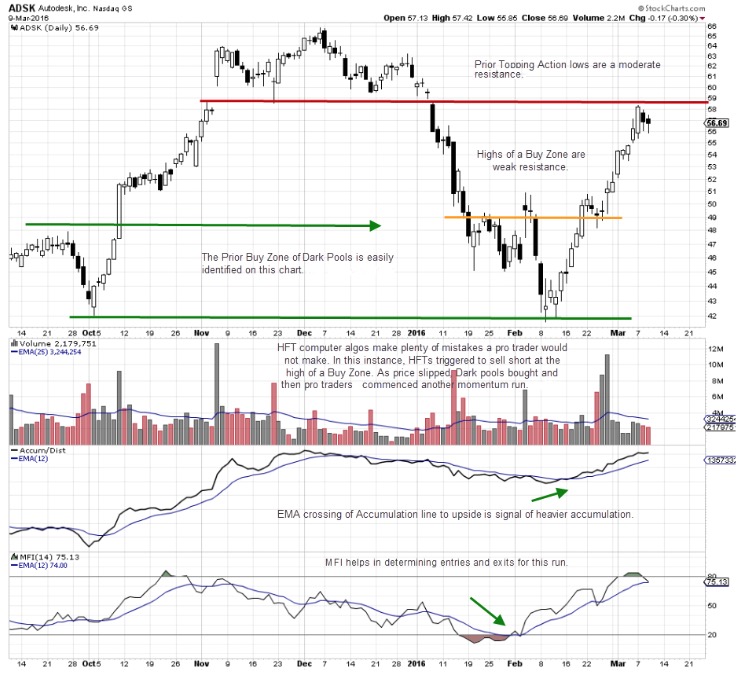List of Critical Elements to Help Improve Exits
The most common areas for problems with trading are entries and exits. This is similar to piloting an aircraft. The take-off (entry) and the landing (exit) are critical. Small mistakes can crash a plane. The same is true of trading. When a Retail or Hobby Trader improves their skills to the level of a Technical Trader, then these problems disappear and profits improve automatically.
The problem is multi-tiered and in both instances given below, profits are lost.
1. Improper entries result is whipsaw action, that either creates a loss or net zero for the trade.
2. Improper exits close the trade prematurely, or too late.
For exits closing the trade too early is a common problem with traders who have taken many losses, been whipsawed many times, or have encountered reversal gaps. They then decide to cut short their profits and trade for a briefer period of time, in the false assumption that holding for less time means less risk. However the opposite is true, the less time a trade is held the higher the risk.
Closing too late increases the risk of High Frequency Trading HFT selling down suddenly with a huge down black candle or a gap down, where the stop is not recognized by the broker often deliberately and the close occurs far from the prior high.
The rule for Swing, Day, or Momentum Trading should be to let profits run but cut losses quickly. Too often what happens is a trader holds onto a losing trade, and cuts profits by exiting before the run shows any signs of weakness.
Here is a list of some critical elements to help improve precision exits for Swing, Day, and Momentum Trading:
1. Know the Market Condition and Trading Condition that the run is forming in. As an example right now the market is in a Dark Pool Quiet Accumulation bottoming formation. That information is vital because it tells Technical Traders that the first tier of resistance in the bottom where the Dark Pools first started accumulating will be easily pushed through as momentum or velocity action begins.
2. Identify the Dark Pool Buy Zone™ parameters. This is the range where the Dark Pools bought, even if the stock continued down for a few days thereafter.
3. Identify the level of the Shift of Sentiment™ when Professional Traders entered prior to any HFT activity.
4. Determine the resistance that will thwart the Momentum or Velocity Run.
5. Monitor the Angle of Ascent™ to determine unsustainable action.
6. Watch Volume for fading patterns or extreme exhaustion patterns.
7. Use the proper Trailing Profit Stops based on technical patterns, NOT percentages. Use intraday for Velocity Runs.
8. Calculate Run Gain Potential, based on resistance that will halt or stall price due to Professionals taking profits.
9. Plan your exit based on the above, in order to exit as the stock is completing the run.
10. Be happy with the profits even if the stock runs one more day.
The chart example below for Autodesk, Inc. (ADSK: NASDAQ) shows a more advanced Technical Trader’s Momentum Run.

This run resulted in approximate a 12 point gain before the stock encountered resistance which prompted Professional Traders to take profits. HFTs entered first selling short on February 24th, then quickly reverting to buying for two days as Dark Pools triggered on the HFT failed sell attempt. The run is not a Velocity Run which alters where and how resistance impacts price. The stock rests at weak resistance and then continues running up to moderate resistance from a Flat Top Formation lows range.
Summary
Instead of taking a .25 cent gain or a 1 point gain, earning 9-12 points in a single trade means significantly higher Return On Investment ROI at the end of the month. In addition there is less stress, lower transaction costs, lower broker fees, reduction in broker slippage and spread risks, as well as building confidence in trading skills and abilities when using precision Exits for Swing, Day, and Momentum Trading.
Trading scared and cutting profits to pennies rather than taking dollars, is the primary difference between the profitability of a Retail Technical Trader and a Retail Hobby Trader.
Trade Wisely,
Martha Stokes CMT
www.TechniTrader.com
info@technitrader.com
